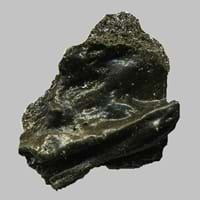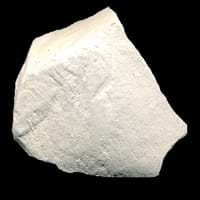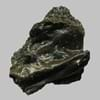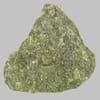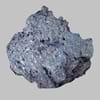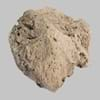Definition
Tachylite is a vitreous form of basaltic volcanic glass. This glass is formed naturally by the rapid cooling of molten basalt
Chalk is a soft, white, powdery limestone consisting mainly of fossil shells of foraminifers
Discoverer
Unknown
Unknown
Etymology
From German Tachylite, from tachy- + Greek lutos soluble, melting
From old English cealc chalk, lime, plaster; pebble, from Greek khalix small pebble, in English transferred to the opaque, white, soft limestone
Class
Igneous Rocks
Sedimentary Rocks
Sub-Class
Durable Rock, Medium Hardness Rock
Durable Rock, Soft Rock
Group
Volcanic
Not Applicable
Other Categories
Coarse Grained Rock, Fine Grained Rock, Medium Grained Rock, Opaque Rock
Fine Grained Rock, Opaque Rock
Texture
Vitreous
Clastic or Non-Clastic
Color
Black, Dark Brown
Grey, White, Yellow
Durability
Durable
Durable
Interior Uses
Decorative Aggregates, Interior Decoration
Decorative Aggregates, Homes, Interior Decoration
Exterior Uses
As Building Stone, As Facing Stone, Garden Decoration, Paving Stone
As Building Stone, As Facing Stone, Paving Stone, Garden Decoration
Other Architectural Uses
Curbing
Powder
Construction Industry
Cutting Tool, Knives, Landscaping, Scrapers
As Dimension Stone, Cement Manufacture, Construction Aggregate, for Road Aggregate, Making natural cement, raw material for manufacture of quicklime and slaked lime, Source of calcium
Medical Industry
Not Yet Used
Not Yet Used
Antiquity Uses
Artifacts
Artifacts, Monuments, Sculpture, Small Figurines
Commercial Uses
Cemetery Markers, Creating Artwork
Alumina Refineries, Creating Artwork, Drawing on blackboards, Gymnasts, athletes and mountain climbers use for grip, In aquifers, Paper Industry, Production of Lime, Raw material for manufacture of quicklime, slaked lime, Soil Conditioner, Whiting, Whiting material in toothpaste, paint and paper
Types
Not Available
Not Available
Features
Available in Lots of Colors and Patterns, Clasts are smooth to touch, NA
Clasts are smooth to touch, Is one of the oldest rock, Smooth to touch, Very fine grained rock
Archaeological Significance
Monuments
Not Yet Used
Used
Famous Monuments
Not Applicable
Data Not Available
Sculpture
Not Yet Used
Used
Famous Sculptures
Not Applicable
Data Not Available
Figurines
Not Yet Used
Used
Formation
Tachylite is a fine-grained, hard rock which is a type of metasomatite, essentially altered basalt. It forms with or without crystallization, either below the surface as intrusive rocks or on the surface as extrusive rocks.
Chalk is formed from lime mud, which accumulates on the sea floor which is then transformed into rock by geological processes.
Mineral Content
Feldspar, Olivine
Calcite, Clay, Clay Minerals, Quartz, Sand
Compound Content
Fe, Mg
Ca, NaCl, CaO
Types of Metamorphism
Burial Metamorphism, Cataclastic Metamorphism, Contact Metamorphism, Hydrothermal Metamorphism, Impact Metamorphism, Regional Metamorphism
Not Applicable
Types of Weathering
Biological Weathering, Chemical Weathering, Mechanical Weathering
Biological Weathering, Chemical Weathering
Types of Erosion
Chemical Erosion, Sea Erosion, Water Erosion, Wind Erosion
Chemical Erosion, Coastal Erosion, Water Erosion
Grain Size
Medium to Fine Coarse Grained
Very fine-grained
Fracture
Conchoidal
Not Available
Porosity
Less Porous
Highly Porous
Compressive Strength
Not Available
Cleavage
Not Available
Non-Existent
Toughness
Not Available
1
Specific Gravity
2.4
2.3-2.4
Transparency
Opaque
Opaque
Density
3.058 g/cm3
2.49-2.50 g/cm3
Resistance
Heat Resistant, Impact Resistant, Wear Resistant
Heat Resistant
Deposits in Eastern Continents
Asia
Cambodia, Russia, South Korea
Brunei, India, Indonesia, Malaysia, Singapore, Thailand, Vietnam
Africa
East Africa
Cameroon, Chad, Ghana, Kenya, Malawi, Sudan, Tanzania, Togo, Zambia, Zimbabwe
Europe
England, Germany, Hungary, Iceland, Scotland, Sweden
England, France, Germany, Spain, United Kingdom
Others
Hawaii Islands
Not Yet Found
Deposits in Western Continents
North America
USA
Canada, USA
South America
Not Yet Found
Colombia
Deposits in Oceania Continent
Australia
Victoria
Adelaide, New Zealand, Queensland, Tonga, Victoria, Yorke Peninsula
Tachylite vs Chalk Characteristics
Though some rocks look identical, they have certain characteristics which distinguish them from others. Characteristics of rocks include texture, appearance, color, fracture, streak, hardness etc. Tachylite vs Chalk characteristics assist us to distinguish and recognize rocks. Also you can check about Properties of Tachylite and Properties of Chalk. Learn more about Tachylite vs Chalk in the next section. The interior uses of Tachylite include Decorative aggregates and Interior decoration whereas the interior uses of Chalk include Decorative aggregates, Homes and Interior decoration. Due to some exceptional properties of Tachylite and Chalk, they have various applications in construction industry. The uses of Tachylite in construction industry include Cutting tool, Knives, Landscaping, Scrapers and that of Chalk include As dimension stone, Cement manufacture, Construction aggregate, For road aggregate, Making natural cement, Raw material for manufacture of quicklime and slaked lime, Source of calcium.
More about Tachylite and Chalk
Here you can know more about Tachylite and Chalk. The life cycle of a rock consists of formation of rock, composition of rock and transformation of rock. The composition of Tachylite and Chalk consists of mineral content and compound content. The mineral content of Tachylite includes Feldspar, Olivine and mineral content of Chalk includes Calcite, Clay, Clay Minerals, Quartz, Sand. You can also check out the list of all Igneous Rocks. When we have to compare Tachylite vs Chalk, the texture, color and appearance plays an important role in determining the type of rock. Tachylite is available in black, dark brown colors whereas, Chalk is available in grey, white, yellow colors. Appearance of Tachylite is Glassy and that of Chalk is Soft. Properties of rock is another aspect for Tachylite vs Chalk. The hardness of Tachylite is 5.5 and that of Chalk is 1. The types of Tachylite are Not Available whereas types of Chalk are Not Available. Streak of rock is the color of powder produced when it is dragged across an unweathered surface. The streak of Tachylite is vermilion while that of Chalk is white. The specific heat capacity of Tachylite is 0.56 kJ/Kg K and that of Chalk is 0.90 kJ/Kg K. Depending on the properties like hardness, toughness, specific heat capacity, porosity etc., rocks are resistant to heat, wear, impact, etc.Tachylite is heat resistant, impact resistant, wear resistant whereas Chalk is heat resistant.
